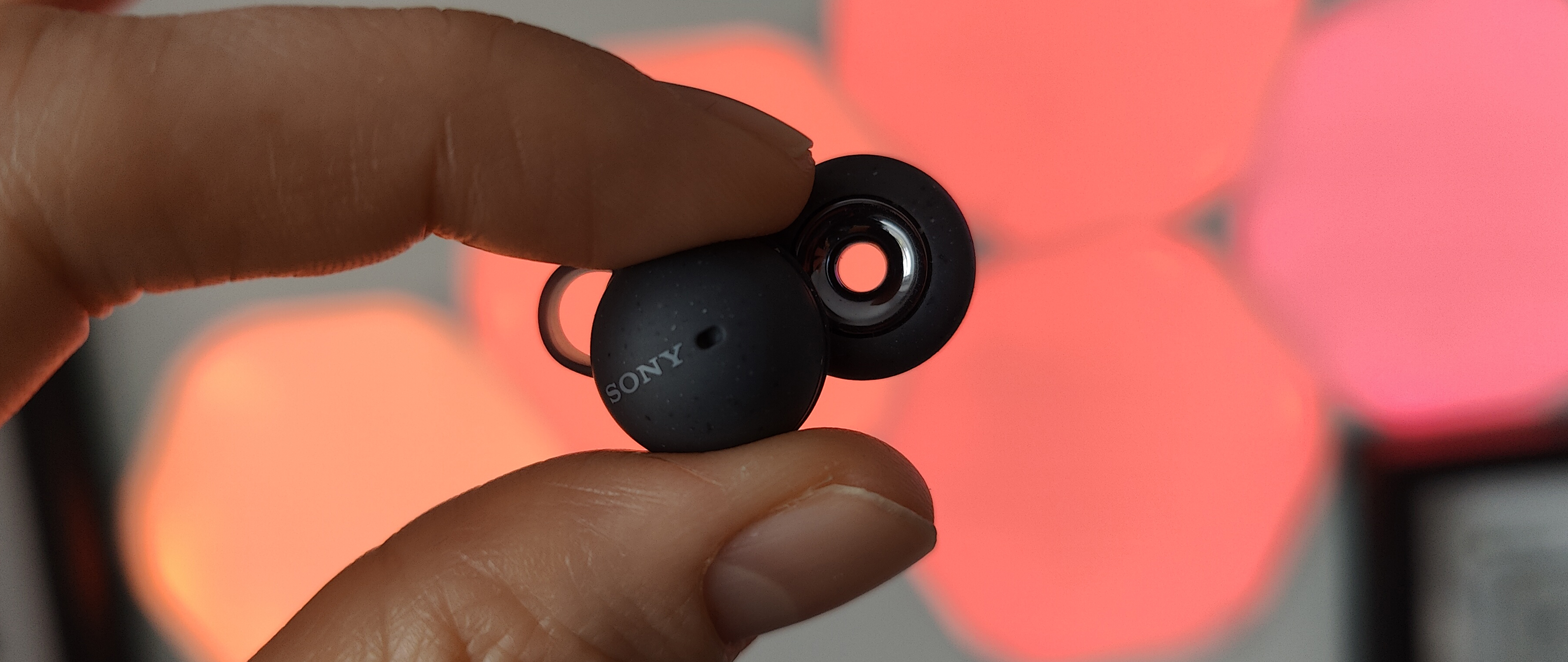Laptop Mag Verdict
The Sony LinkBuds are an amazingly unique idea: the next logical step in audio transparency and a huge step forward for how we control earbuds. But they need more time in the oven before they can reach perfection.
Pros
- +
One-of-a-kind design
- +
Wide Area Tap is revolutionary
- +
IPX4 water resistance
- +
Decent sound quality (most of the time)
Cons
- -
Weird fit is not for everyone
- -
Limited bass
- -
Middling battery life
- -
Call quality could be better
Why you can trust Laptop Mag
The Sony LinkBuds are an experiment — that much is obvious from the fact the drivers have holes in them.
Rather than blocking out the outside world by default, the LinkBuds let it in as part of what you’re listening to, almost like a permanent transparency mode.
Normally, I criticize earbuds for their lack of active noise cancellation (ANC), or an isolating fit, but it does come with its drawbacks, namely not hearing important sounds and conversations around you.
Do the LinkBuds fill a hole in the wireless earbud market?
Video Review
Sony LinkBuds: Availability and price
The LinkBuds are available in either gray or white for $179/£149; that makes them quite a pricey experiment. It’s $10 less than the AirPods 3 and at the same price as Sennheiser’s CX Plus True Wireless. It feels weird comparing the LinkBuds to these, because as you’ll see, these are truly one-of-a-kind.
Sony LinkBuds: Design
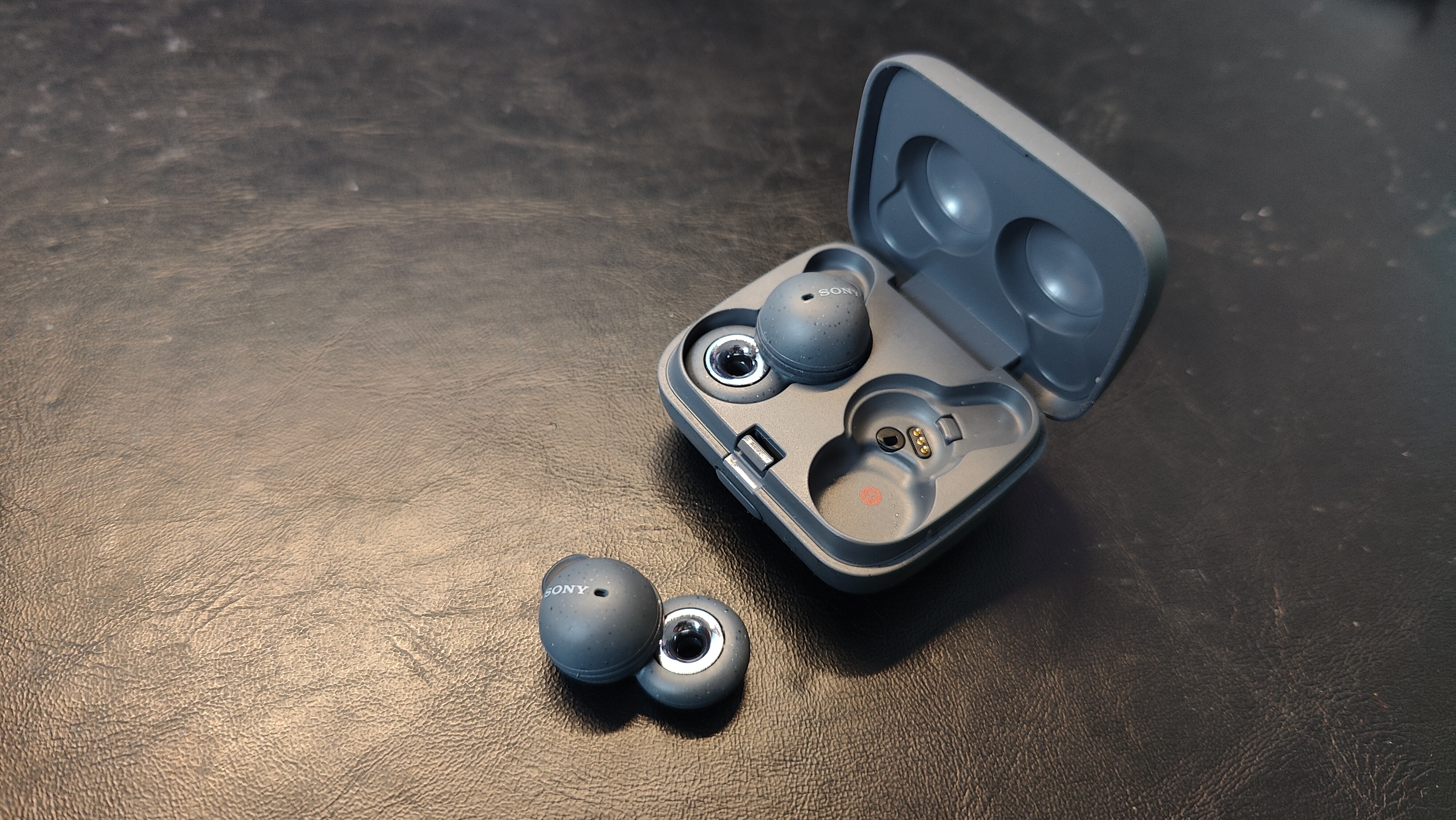
Let’s start with the most obvious sign that we’re dealing with a so-called “Weird Sony” experiment here: they certainly do look strange!
They look like a polo that’s been stuck onto a mint imperial (ask your British mates about the latter), and the use of recycled plastic materials gives the buds and case a unique finish that’s satisfying to touch and looks premium to boot.
Sign up to receive The Snapshot, a free special dispatch from Laptop Mag, in your inbox.
Not only that, but these are easily some of the smallest and lightest buds I’ve tested. The buds come in at 0.9 x 0.6 x 0.4 inches and weigh 0.1 ounces, which is smaller and lighter than the AirPods 3 (1.2 x 0.7 x 0.8 inches, 0.15 ounces) and Sennheiser CX Plus True Wireless (1.2 x 1.0 x 0.8 inches, 0.2 ounces).

The Linkbuds' miniature case is skinny jeans-friendly with dimensions of 1.8 x 1.4 x 1 inches and a weight of 1.2 ounces. AirPods 3 come close (1.8 x 2.1 x 0.8 inches, 1.3 ounces) and the CX Plus True Wireless are laughed out the room (1.3 x 2.3 x 1.6 inches, 1.7 ounces).
Now, talk about the fit; it won’t be everyone’s cup of tea. Wedging a small donut sideways in your ear is a strange intrusion compared to something more cushioned (e.g. a rubberized tip), and it will take a while to figure out which size supporter to use for a secure fit.
This will certainly divide people. Many will be like me: take some time to get acquainted, but get used to them and even find them comfortable. The rest will just find this a little too strange to accept.
Sony LinkBuds: Controls and digital assistant

Normally, earbuds come with some sort of surface to tap, a stem to pinch or buttons to press — that’s been the de facto standard for years now. You use these to skip tracks or activate the digital assistant, which by the way, the on-board mics on the LinkBuds do a good job of picking up any voice request, even in busier, louder situations.
But Sony tore up the rulebook with something called Wide Area Tap, and I’m not exaggerating when I say this tech is set to be an absolute game changer in true wireless earbuds.
Instead of directly interacting with the bud, you tap your cheek near it and the LinkBuds detect the vibrations. At first, it feels weird to do this, but it quickly becomes one of those “Why didn’t anyone think of this before?” revelation moments.
Is it perfect? No. When I was chewing a Mars Bar, the LinkBuds interpreted the vibrations as a tap and I managed to pause my music with the help of some chocolate, caramel and nougat. Sony’s got to work out these kinks for their next buds that use this form of interaction.
But that’s the cost of an experiment that is largely successful. With Wide Area Tap, we’ve just seen a glimpse of a future where buds can be miniaturized dramatically with direct cheek tap interactions.
Sony LinkBuds: Audio quality
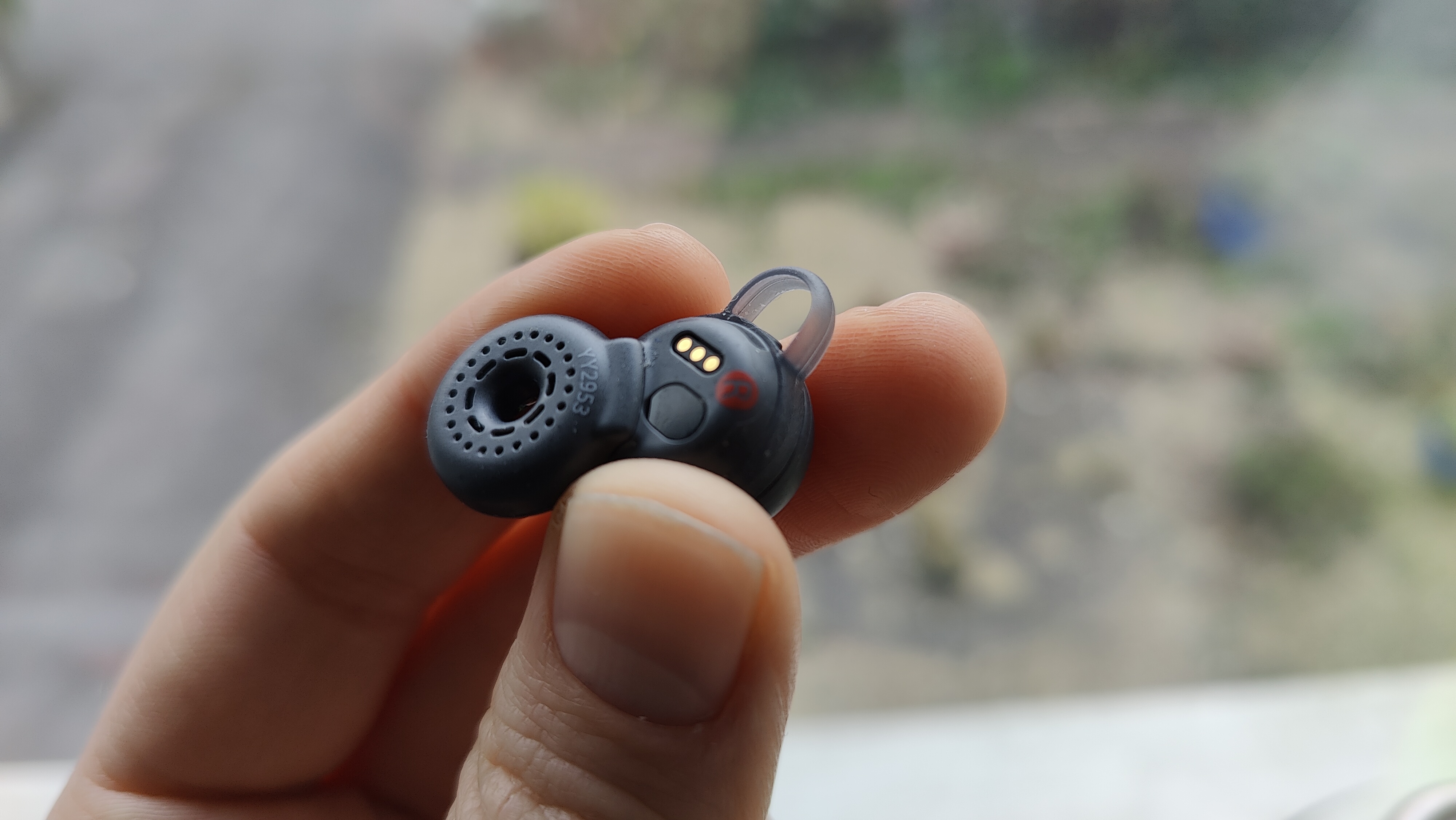
Let’s start with the technical details because the Sony LinkBuds have it all: the same V1 audio processor you find in the WF-1000XM4s, a 12mm ring driver with high-power neodymium magnets for extra oomph on the bass, Sony’s proprietary Digital Sound Enhancement Engine (DSEE) for upscaling lossy audio, and support for spatial audio.
Sounds good, right? Well, there are a couple compromises that come with the ring fit. Firstl, without that direct isolating fit of a rubberized tip, the bass is not as warm as I’d like. And second, in linking the online and offline worlds via the unique design, you start to notice that the offline world tries to fight the online world at every turn.
Indoors, this is not a problem and the merged listening is lovely while you’re cooking, doing housework or working. When you hit that sweet spot on the volume between whatever you’re listening to and what’s going on around you, it’s a seriously cool experience that blows any kind of transparency mode out of the water.
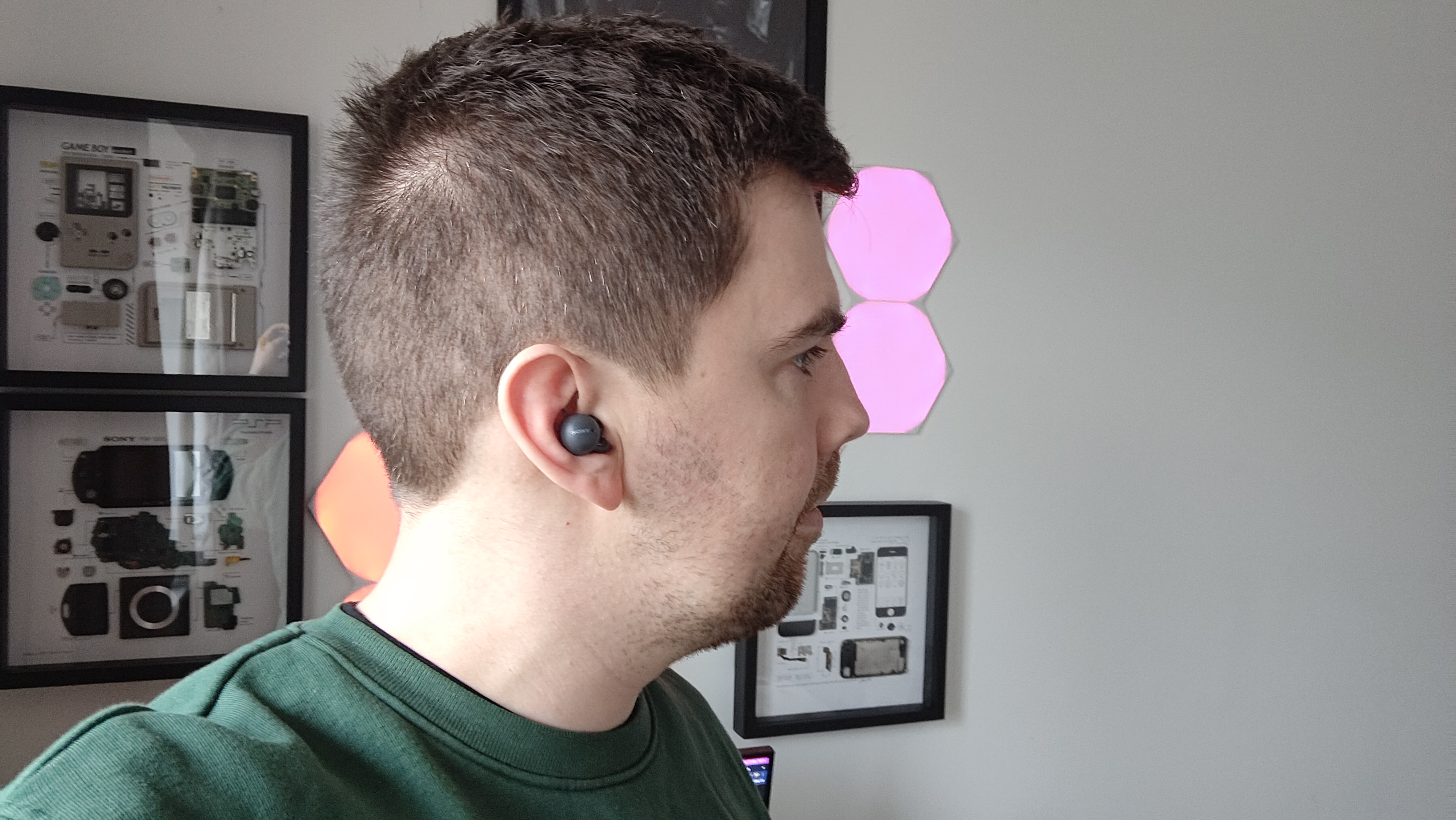
Tracks with a higher number of intricate details, like “2009” by Mac Miller, demonstrate the clarity of Sony’s signature sound. The subtle echo of the piano and the Mac’s vocals are full of life, and the sharp 808 bass doesn’t overwhelm the mix either.
But when taken outside, you will need to crank that volume up to contend with what’s going on around you, and when nearing 100%, you’ll start to detect some slight distortion. This is most apparent in simpler songs with more compressed compositions, like the “Bittersweet Symphony” cover by Four Year Strong. The LinkBuds normally provide detail to the thudding lower tones without eating into the chugging guitars in the mids, but when turning them up to hear them over train announcements, they start to crack.
Make no mistake about it. The ring driver is a novel concept and Sony is onto something. They sound good most of the time (especially with podcasts) and give you audio awareness of your surroundings, but the idea still needs a bit of work.
Sony LinkBuds: App

The free Sony Headphones app continues to be one of the more feature-complete companion apps out there with an easy-to-use interface. From here, you have a few preset EQs, or a fully customizable one. You can also activate speak-to-chat to turn the music down with your voice, as well as tweak 360 Reality Audio (or the wide area tap functions).
And just like the WF-1000XM4, the earbuds also utilize Digital Sound Enhancement Engine (DSEE) Extreme: Sony’s technology to enhance compressed audio by restoring high-range audio via the company’s proprietary Edge-AI.
If I had one small request for Sony to make its app even better, it would be to let us customize each individual tap function rather than giving us certain presets. Currently, I’m stuck with song select interactions on my left ear and playback on the right. Instead I’d love to have a double tap on my right to skip forward a track and the same on my left to skip back.
Sony LinkBuds: Battery life
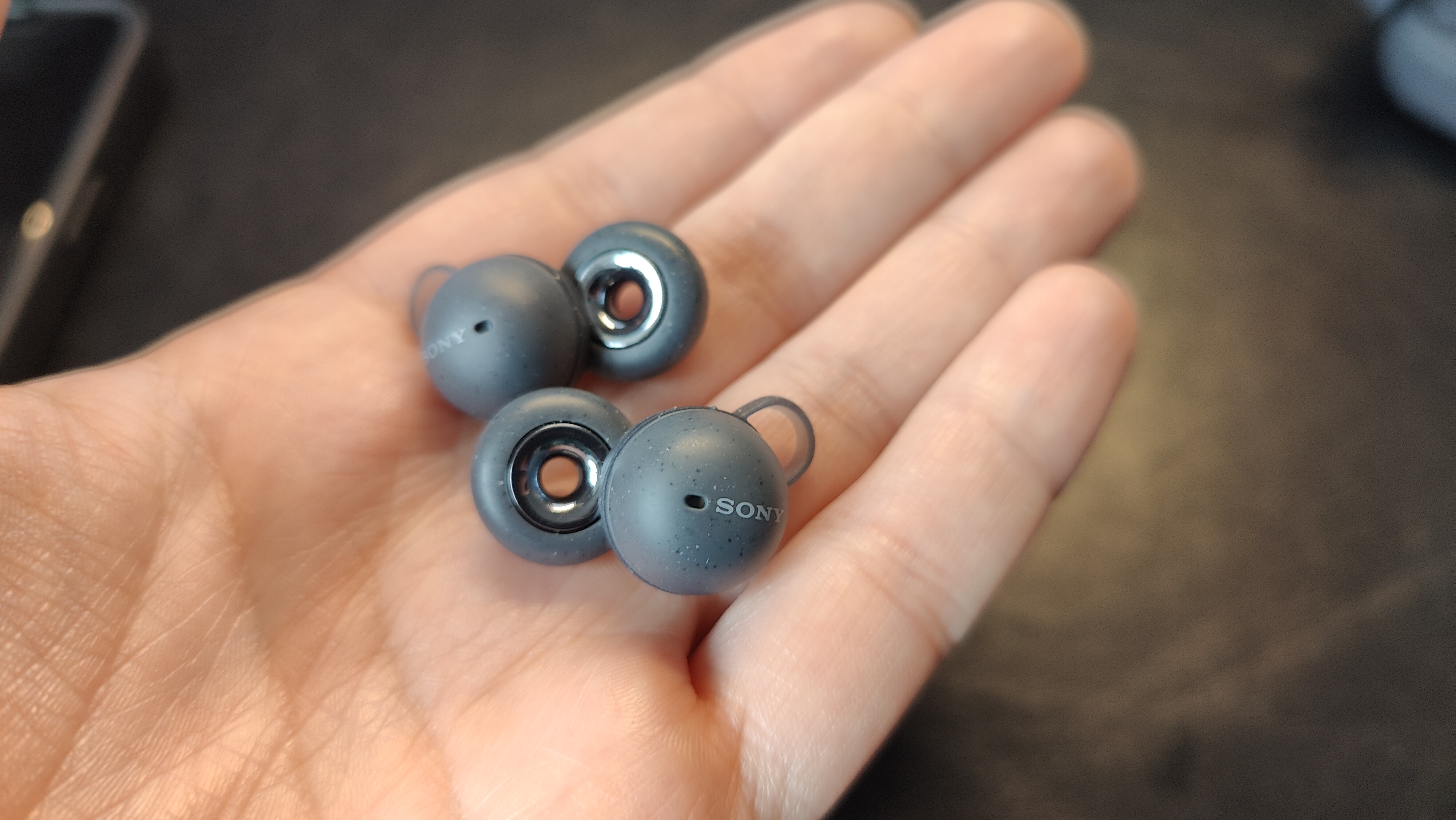
Sony touts a 5.5-hour listening time that is boosted to 17.5 hours with the charging case.Once you’ve burned through that battery, the fast charging support squeezes an extra 1.5 hours of playtime out of a 10-minute charge.
In reality, the fast charge did meet these expectations, but I hit just a couple minutes shy of 5 hours listening time in my testing. Interestingly, I got 30 minutes more continuous talk time out of these than Sony promises (3 hours rather than 2.5), but while that’s a small victory, the whole stamina picture is a disappointing one.
In fact, it’s highlighted even more by the fact that these are supposed to be buds that you wear all day, to connect the offline and online worlds. If the on-board batteries can’t hang with the style of wearing you’re pushing for, then there’s a problem.
Sony LinkBuds: Call quality and connectivity
With Bluetooth 5.2, Sony’s LinkBuds form a strong connection that didn’t break at distances up to 25 feet in my testing — even through walls and doors from one corner of my apartment to the other.
As for call quality, much like the audio quality, it’s a bit of a mixed bag. The microphone does a nice job picking up your voice and isolating it from any background noise when indoors or outside on quiet streets. But once you try to talk to someone alongside main roads, or in windy weather conditions, you’re quickly overwhelmed by your surroundings.
Sony LinkBuds: Verdict
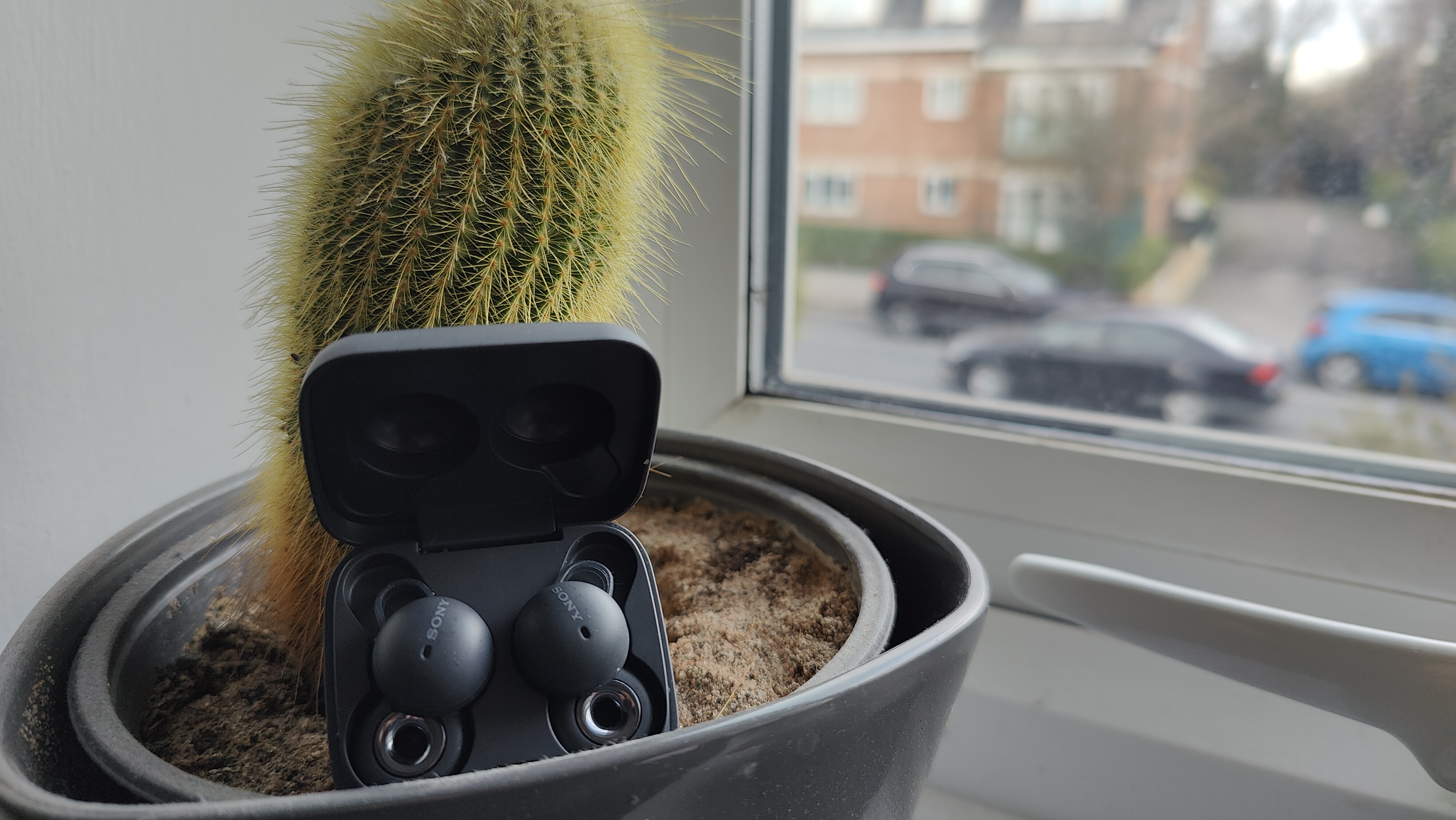
So, what are we left with? Easy: this is a first generation product.
The LinkBuds show some amazing ideas that Sony has for the future of earbuds, from the Wide Area Tap and merged listening experience, to the recycled plastic material construction and its unique design that nicely mixes the outside world and whatever you're listening to.
But they are a rough cut diamond right now, glimmering with potential, but with one too many issues to make them worthwhile in their current form. Once the weird fit of the donut driver is improved, the bass is boosted and call quality is tweaked, the LinkBuds 2 will be a surefire hit.

Jason brought a decade of tech and gaming journalism experience to his role as a writer at Laptop Mag, and he is now the Managing Editor of Computing at Tom's Guide. He takes a particular interest in writing articles and creating videos about laptops, headphones and games. He has previously written for Kotaku, Stuff and BBC Science Focus. In his spare time, you'll find Jason looking for good dogs to pet or thinking about eating pizza if he isn't already.
